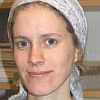| |
    
Jean-Philippe Doyon,
Celine Scornavacca,
Konstantin Yu Gorbunov,
Gergely J. Szöllösi,
Vincent Ranwez and
Vincent Berry. An efficient algorithm for gene/species trees parsimonious reconciliation with losses, duplications, and transfers. In Proceedings of the Eighth RECOMB Comparative Genomics Satellite Workshop (RECOMB-CG'10), Vol. 6398:93-108 of LNCS, springer, 2011.
Keywords: branch length, duplication, dynamic programming, explicit network, from multilabeled tree, from species tree, from unrooted trees, lateral gene transfer, loss, phylogenetic network, phylogeny, polynomial, Program Mowgli, reconstruction.
Note: http://www.lirmm.fr/~vberry/Publis/MPR-DoyonEtAl.pdf, software available at http://www.atgc-montpellier.fr/MPR/.
Toggle abstract
"Tree reconciliation methods aim at estimating the evolutionary events that cause discrepancy between gene trees and species trees. We provide a discrete computational model that considers duplications, transfers and losses of genes. The model yields a fast and exact algorithm to infer time consistent and most parsimonious reconciliations. Then we study the conditions under which parsimony is able to accurately infer such events. Overall, it performs well even under realistic rates, transfers being in general less accurately recovered than duplications. An implementation is freely available at http://www.atgc- montpellier.fr/MPR. © 2010 Springer-Verlag."
|
|
| |
 
Gergely J. Szöllösi and
Vincent Daubin. Modeling Gene Family Evolution and Reconciling Phylogenetic Discord. In Evolutionary Genomics, Statistical and Computational Methods, Volume 2, Methods in Molecular Biology, Vol. 856:29-51, Chapter 2, springer, 2011.
Keywords: duplication, from multilabeled tree, lateral gene transfer, likelihood, phylogeny, reconstruction, statistical model.
Note: ArXiv version entitled The pattern and process of gene family evolution.
Toggle abstract
"Large-scale databases are available that contain homologous gene families constructed from hundreds of complete genome sequences from across the three domains of life. Here, we discuss the approaches of increasing complexity aimed at extracting information on the pattern and process of gene family evolution from such datasets. In particular, we consider the models that invoke processes of gene birth (duplication and transfer) and death (loss) to explain the evolution of gene families. First, we review birth-and-death models of family size evolution and their implications in light of the universal features of family size distribution observed across different species and the three domains of life. Subsequently, we proceed to recent developments on models capable of more completely considering information in the sequences of homologous gene families through the probabilistic reconciliation of the phylogenetic histories of individual genes with the phylogenetic history of the genomes in which they have resided. To illustrate the methods and results presented, we use data from the HOGENOM database, demonstrating that the distribution of homologous gene family sizes in the genomes of the eukaryota, archaea, and bacteria exhibits remarkably similar shapes. We show that these distributions are best described by models of gene family size evolution, where for individual genes the death (loss) rate is larger than the birth (duplication and transfer) rate but new families are continually supplied to the genome by a process of origination. Finally, we use probabilistic reconciliation methods to take into consideration additional information from gene phylogenies, and find that, for prokaryotes, the majority of birth events are the result of transfer. © 2012 Springer Science+Business Media, LLC."
|
|
| |
 
Lawrence A. David and
Eric J. Alm. Rapid evolutionary innovation during an Archaean genetic expansion. In Nature, Vol. 469:93-96, 2011.
Keywords: duplication, dynamic programming, from multilabeled tree, from rooted trees, from species tree, parsimony, phylogenetic network, phylogeny, Program Angst.
Note: http://dx.doi.org/10.1038/nature09649, Program Angst described here.
|
|
|
 - forked on GitHub.
- forked on GitHub.













